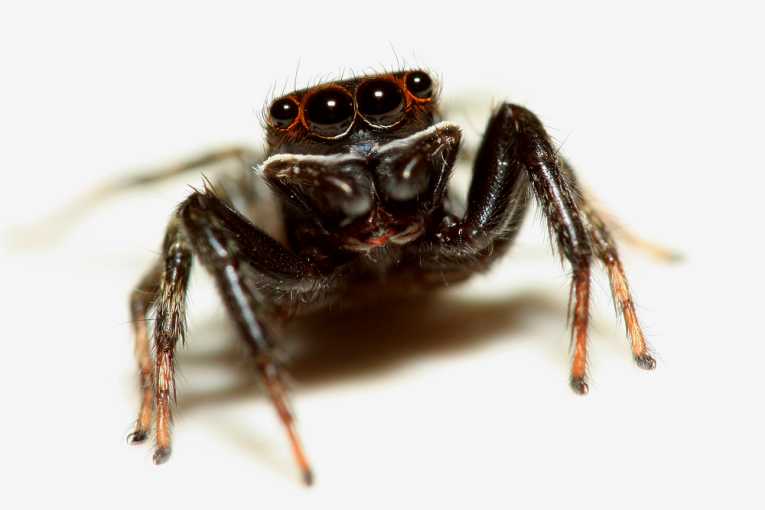The zebra spiders and their allies (the Salticidae group) are jumping spiders that catch their prey without a web. In order to jump accurately on flies or other prey and fine-tune their capture technique, their 3D vision has to be perfect. Unlike the binocular approach of humans (stereopsis) or the insect method which moves the head from side to side to achieve a parallax by means of motion, these spiders use an image defocusing system to judge the relative distances involved.
Hasarius adansoni has eight eyes, with the outer two used for movement detection. Two central, "primary" eyes have four layers of photoreceptors. Two layers detect green light, one receiving focused images and the other receiving fuzzy (out-of-focus) images; with the two layers closest to the surface sensitive to ultraviolet light.
Osaka and other universities have been investigating the opsins(colour chemicals) of Arthropods and the colour vision of spiders for many years. This Japanese research showed that green light was necessary for accuracy since the spiders were able to judge their jumps successfully in green light. Presumably, they used the two layers closest to the retinal surface. In red light (which does not contain the shorter wavelength green light) many spiders could not jump accurately. The researchers then created a mathematical model to predict how inaccurate the jumps would be under different wavelengths of light. The model did predict the spiders' performance exactly as foreseen. These animals are therefore unique in using this depth perception technique.
Dr. Takashi Nagata of Osaka City University and several of his colleagues have published this research in the current Science journal. Japanese scientists and others have been investigating spider vision because of its unique mechanisms. The suitability of this system for robotic vision in the future seems high.
Jumping spiders shown under green and red light; Credit: © Science/AAAS
Computers or simple robots could more easily observe motion if they were able to simply focus on objects and, at the same time, detect the unfocussed image for this motion parallax to be achieved. Rapid detection of motion in an area or in a specific object could be used in surveillance, or as a vision system in new types of camera.










